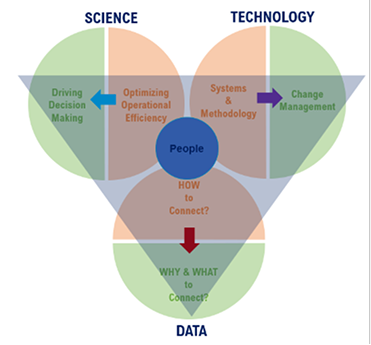The use of Internet of Things (IoT) technology in laboratories is transforming the way lab operations are carried out. By connecting lab equipment and instruments to a network, IoT facilitates real-time data collection, monitoring, and analysis, leading to enhanced efficiency, accuracy, and productivity. This blog explores the numerous benefits of IoT-enabled lab equipment, real-world applications, and success stories, illustrating how IoT is transforming the modern laboratory landscape.
What is IoT?
The Internet of Things (IoT) is a system of connected devices that exchange data with one another over the internet. These devices, embedded with sensors and software, can collect and transmit data, allowing for real-time monitoring, control, and analysis. In a laboratory setting, IoT can connect various lab instruments, equipment, and systems, creating a smart lab environment.
Benefits of IoT-Enabled Lab Equipment
Real-Time Monitoring and Data Collection:
IoT devices can continuously track lab equipment and environmental factors, delivering real-time data on variables like temperature, humidity, pH levels, and equipment performance. This ensures that experiments and processes are conducted under optimal conditions and allows for the immediate detection of any deviations or anomalies.
Enhanced Accuracy and Precision:
Automating data collection and monitoring minimizes the chance of human error, resulting in more precise and dependable outcomes. IoT devices can perform precise measurements and record data with high fidelity, improving the overall quality of lab outputs.
Improved Efficiency and Productivity:
By automating routine activities such as data logging, equipment calibration, and maintenance scheduling, IoT allows lab staff to concentrate on more complex and critical tasks. This boosts overall lab productivity and efficiency.
Predictive Maintenance and Reduced Downtime:
IoT sensors continuously monitor the condition and efficiency of lab equipment, allowing for the detection of potential failures or maintenance requirements before they arise. This proactive approach minimizes downtime and ensures that lab operations run smoothly without unexpected interruptions.
Enhanced Data Management and Analysis:
IoT systems can integrate with Laboratory Information Management Systems (LIMS) and other data management platforms, facilitating seamless data transfer and consolidation. This enables comprehensive data analysis, trend identification, and informed decision-making.
Regulatory Compliance and Documentation:
IoT can help labs comply with stringent regulatory requirements by providing automated, accurate, and time-stamped records of all lab activities. This ensures transparency and traceability, which are essential for audits and quality assurance.
Real-World Applications and Success Stories
Smart Environmental Monitoring:
Environmental monitoring is essential in laboratories where conditions like temperature and humidity can affect the outcomes of experiments. IoT-enabled sensors can continuously track these parameters, sending alerts to lab personnel if conditions deviate from predefined thresholds. For instance, in pharmaceutical labs, maintaining precise environmental conditions is vital for the stability of compounds. IoT ensures these conditions are met, safeguarding the integrity of experimental results.
Automated Sample Management:
In research labs handling large volumes of samples, IoT can streamline sample management processes. Smart freezers and storage units equipped with IoT sensors can track sample locations, monitor storage conditions, and manage inventory levels. This minimizes the risk of sample degradation or loss while enhancing traceability. For example, a biotech company might use IoT-enabled storage to ensure that biological samples are kept at optimal temperatures, enhancing the reliability of experimental outcomes.
Lab Equipment Optimization:
IoT can optimize both the usage and upkeep of lab instruments such as centrifuges, spectrometers, and microscopes. Sensors can monitor equipment performance, usage patterns, and maintenance needs, allowing labs to schedule maintenance proactively and avoid costly breakdowns. A university research lab, for instance, might use IoT to ensure that shared equipment is functioning efficiently and is readily available when needed.
Enhanced Safety Protocols:
Safety is a paramount concern in laboratories, particularly those dealing with hazardous materials. IoT enhances safety by monitoring lab conditions and ensuring adherence to safety regulations. For example, gas sensors can detect harmful leaks and automatically activate alarms and ventilation systems, preventing accidents in chemical labs and ensuring a secure environment for researchers.
Case Study: IoT in a Clinical Laboratory
A clinical laboratory specializing in diagnostic testing implemented an IoT system to enhance its operations. IoT-enabled devices were used to monitor the temperature and humidity of storage areas for reagents and samples, ensuring they were kept within strict parameters. The system provided real-time alerts to lab technicians if conditions deviated, allowing for immediate corrective action.
Furthermore, IoT sensors were installed on diagnostic equipment to track performance and anticipate maintenance needs. This proactive approach reduced equipment downtime and ensured that the lab could maintain high throughput and accuracy in its testing processes. As a result, the lab saw a significant improvement in operational efficiency and reliability, leading to faster turnaround times for test results and increased satisfaction among healthcare providers and patients.
Future Prospects of IoT in Laboratories
Although IoT integration in labs is still in its early phase, future advancements hold great promise. Emerging technologies like 5G, artificial intelligence (AI), and edge computing will further boost IoT's potential, making lab operations more advanced and efficient.
- 5G Connectivity: The deployment of 5G networks will allow faster and more reliable data transmission, enabling smoother connectivity for a larger number of IoT devices in labs. This will enable real-time, high-bandwidth applications such as remote monitoring and control of lab equipment.
- Artificial Intelligence: AI can process the massive data streams from IoT devices, uncovering patterns and insights that might go unnoticed by human analysts, leading to breakthroughs in research and optimization of lab workflows.
- Edge Computing: By processing data closer to where it’s generated, edge computing decreases delays and bandwidth use, allowing for faster and more efficient real-time data analysis and decision-making in labs.
Conclusion
The integration of IoT technology in laboratories is transforming the way lab operations are conducted, offering numerous benefits, such as real-time monitoring, enhanced accuracy, improved efficiency, predictive maintenance, and better data management. Real-world applications and success stories demonstrate the significant impact of IoT in various lab settings, from environmental monitoring to sample management and equipment optimization. As IoT technology continues to advance, the future promises even greater innovations and improvements in laboratory operations, making IoT an essential component of the modern lab landscape.



